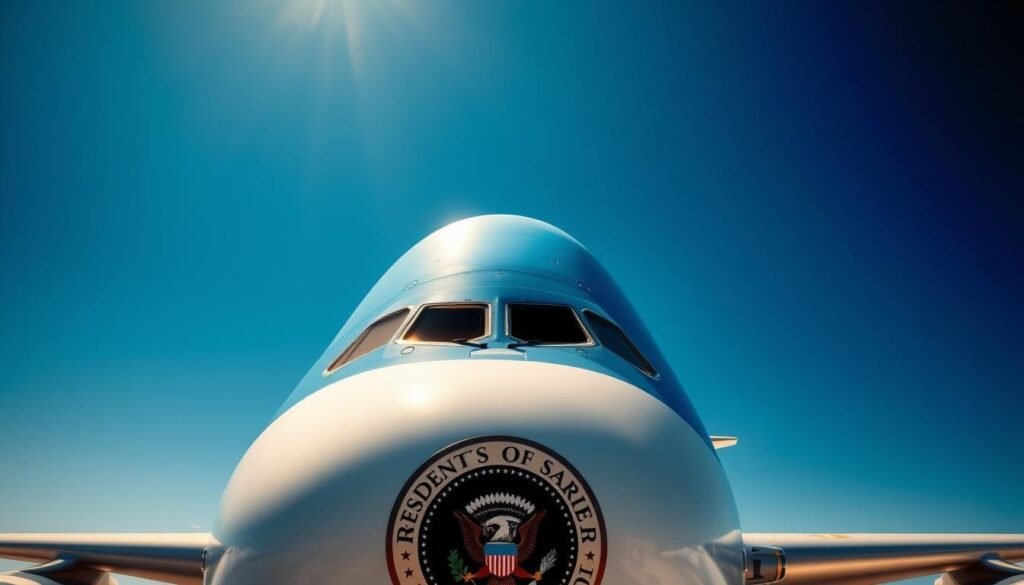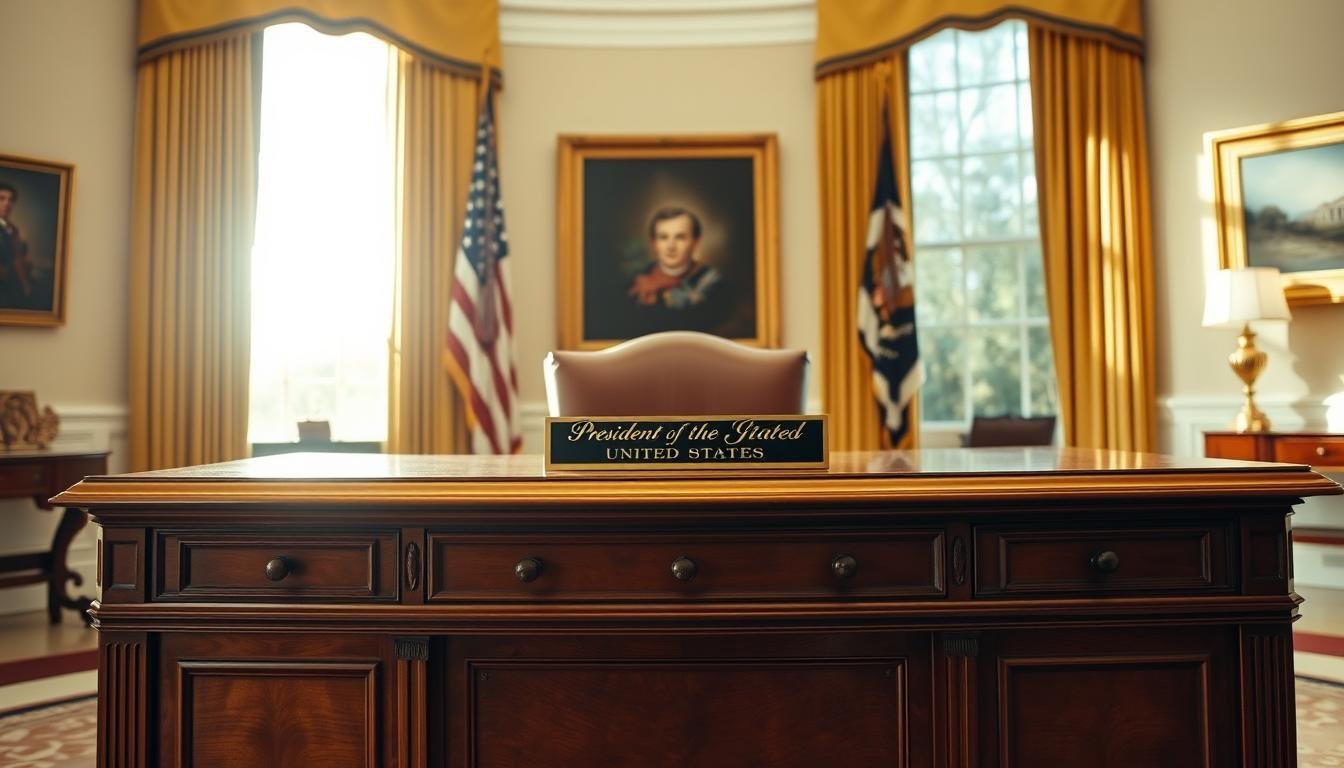How Much Does the US President Earn? Ever wondered about the money the US President makes? It’s not just a salary. The President gets a whole package of benefits.
The presidential compensation is more than just a paycheck. It includes many perks and benefits. These are part of the White House’s offerings. The President’s financial package helps them handle the job’s demands.
Looking at the President’s salary, we must see the bigger picture. The total compensation includes things like expense accounts and travel allowances. These add up to a comprehensive package.
Contents
- 1 The Current Presidential Salary
- 2 Beyond the Base Salary: Presidential Expense Accounts
- 3 Living in the White House: A Valuable Perk
- 4 Presidential Transportation Benefits
- 5 How Much Does the President of the US Earn Compared to Other World Leaders?
- 6 Tax Implications for Presidential Income
- 7 The Evolution of Presidential Compensation
- 8 Post-Presidency Financial Benefits
- 9 Presidential Wealth Beyond the Salary
- 10 Conclusion: How Much Does the US President Earn?
- 11 FAQ
- 11.1 How much does the US President earn?
- 11.2 Are there other benefits included in the presidential compensation package?
- 11.3 How does the US President’s salary compare to other world leaders?
- 11.4 Are the President’s benefits taxable?
- 11.5 What is the cost of maintaining the White House?
- 11.6 How much does it cost to operate Air Force One?
- 11.7 Do former presidents receive financial benefits?
- 11.8 Can the President earn additional income beyond their salary?
- 11.9 How often is the presidential salary adjusted?
- 11.10 Are there any restrictions on the President’s financial activities?
The Current Presidential Salary
Ever wondered how much the US President makes? The President earns $400,000 a year. This amount has been the same since 2001, when it was last changed. [How Much Does the US President Earn?]
Comparison to Average American Income
The average American household makes about $67,000 a year. This makes the President’s salary almost six times higher. The President’s pay is much more than the average person’s, showing the big responsibility and public eye on the job.
The President’s salary has changed over time. In 2001, it was set at $400,000. Before that, it was $200,000 since 1969. The salary changes to keep up with the economy and living costs.
Taxable vs. Non-taxable Benefits
The President gets more than just a salary. Some benefits, like a $50,000 expense account, are taxed. But using the White House is not taxed because it’s needed for work. Knowing the difference between taxed and non-taxed benefits helps understand the President’s total pay.
Beyond the Base Salary: Presidential Expense Accounts
The presidential expense accounts are key to the President’s compensation. They help the President do their job well. These accounts cover many official expenses, so the President can work without worrying about money.
The President’s expense accounts help the office run smoothly. They pay for travel, events, and keeping the White House in good shape.
What This Allowance Covers
The allowance pays for many official costs, including:
- Travel costs for the President and staff
- Expenses for official events and receptions
- Maintenance and upkeep of the White House
- Other official expenditures
The flexibility of these accounts lets the President handle unexpected situations. They also help the President represent the United States abroad.

The White House manages these accounts carefully. They follow rules to be open and responsible. The President’s financial reports show how the money is spent, making things clear to everyone. [How Much Does the US President Earn?]
Knowing about presidential expense accounts helps us see the President’s full compensation. It’s important for the President to do their job well.
Living in the White House: A Valuable Perk
As the President of the United States, you get to live in the White House. It’s a historic and luxurious house. The White House is not just a symbol of American democracy; it’s also a home. It has 132 rooms, 35 bathrooms, and 412 doors.
White House Market Value
It’s hard to estimate the White House’s market value because of its historical significance. If it were valued like other properties in Washington D.C., it would be worth hundreds of millions of dollars. This is due to its prime location and extensive grounds.
The White House needs a lot of money to maintain and operate. It has a big staff, including chefs, butlers, housekeepers, and maintenance workers. The annual budget covers food, utilities, maintenance, and staff salaries, totaling tens of millions of dollars.
| Expense Category | Annual Cost |
|---|---|
| Staff Salaries | $10 million |
| Utilities and Maintenance | $5 million |
| Food and Household Expenses | $3 million |
Personal vs. Official Staff
The White House staff includes both personal and official staff. The official staff manage the White House’s daily operations. They handle events, correspondence, and property maintenance. The personal staff serves the President and their family, like personal aides and chefs.
In conclusion, living in the White House is a unique benefit. It comes with big responsibilities and costs. Understanding the White House’s value and operational costs shows the complexities of being the President of the United States.
Presidential Transportation Benefits
The President’s travel needs are met with safety and efficiency in mind. They get to use Air Force One, a top-notch aircraft. It’s also ready to serve as a mobile command center if needed.
Operating Costs Per Hour
Using Air Force One comes with a high price tag. It costs about $200,000 every hour. This includes fuel, maintenance, and crew costs.
| Category | Cost per Hour |
|---|---|
| Fuel | $60,000 |
| Maintenance | $80,000 |
| Crew Expenses | $60,000 |
Security Arrangements
Security is key when the President travels. Air Force One has advanced security features. These include defensive systems and countermeasures against threats.
Secret Service agents also travel with the President. They’re ready for any security issue. [How Much Does the US President Earn?]

The President’s transportation benefits are all about safety, efficiency, and security. The costs for Air Force One are high. But they’re essential for the President to do their job safely.
How Much Does the President of the US Earn Compared to Other World Leaders?
The US President’s salary is both competitive and unique. They earn $400,000 a year, a figure unchanged since 2001. But how does this compare to other world leaders?

Singapore’s Prime Minister is among the highest-paid, earning over $1.1 million annually. Australia’s Prime Minister makes around $440,000, a bit more than the US President. Leaders from Switzerland and Norway also earn more than the US President.
- Singapore’s Prime Minister: $1.1 million+
- Australia’s Prime Minister: $440,000
- Switzerland’s President: around $450,000
UK, Germany, France, and Canada
On the other hand, leaders in major European countries and Canada earn less. The UK’s Prime Minister makes about $230,000. Germany’s Chancellor earns around $270,000. France’s President and Canada’s Prime Minister’s salaries are adjusted periodically, often based on senior civil servants’ or judges’ pay.
| Country | Leader’s Salary (approx.) |
|---|---|
| UK | $230,000 |
| Germany | $270,000 |
| France | varies, around $200,000-$300,000 |
| Canada | $320,000 |
This comparison shows the varied salaries of world leaders. It reflects different economic conditions, living costs, and cultural norms. The US President’s salary is just one part of a larger international picture.
Tax Implications for Presidential Income
It’s important to understand the taxes the President must pay. As a top government official, they face special tax rules. These rules affect their financial duties.
Income Tax Requirements
The President must pay income tax like any U.S. citizen. This includes their salary and any other income. The IRS treats their income like everyone else’s, with some special rules.
- The President must file their tax returns by the deadline, just like other taxpayers.
- They are entitled to deductions and credits, which can reduce their tax liability.
- The President’s tax returns are subject to audit, ensuring compliance with tax laws.
Annual Financial Disclosure Forms
The President also has to file annual financial disclosure forms. These forms show their financial dealings. They help spot any possible conflicts of interest. [How Much Does the US President Earn?]
The forms cover:
- Income sources and amounts.
- Assets and liabilities.
- Transactions involving stocks, bonds, and other securities.
Looking at these forms helps the public understand the President’s finances. It shows how their income is handled. This openness is key to keeping trust in the presidency.
The Evolution of Presidential Compensation
Did you know how the presidential salary has changed over time? It shows how the economy and the role of the president have evolved.
The history of the presidential salary is filled with big raises. In 1873, the salary jumped from $25,000 to $50,000. Then, in 1909, it went up to $75,000. The 20th century saw more increases, to $100,000 in 1949 and $200,000 in 1969. Most recently, in 2001, it was set at $400,000.
1873, 1909, 1949, 1969, and 2001 Raises
These raises were not random. Congress carefully thought them through. For example, the 1873 increase aimed to standardize federal salaries. Later raises kept up with inflation and economic changes.
Changing the presidential salary needs Congress’s okay. This ensures careful thought and balance in the US government. It prevents one person from making big decisions on pay.
Learning about the history of presidential pay helps us see how the economy, laws, and the president’s role interact.
Post-Presidency Financial Benefits
Did you know former US presidents get financial help after leaving office? This support is for their service and the ongoing needs for their time and security.
One key benefit is the staff support. Former presidents get a budget for their staff. This helps them handle their duties and responsibilities.
Staff Budget Limitations
The staff budget for former presidents is big but not endless. It pays for office upkeep, staff salaries, and other costs. The amount depends on the president’s needs and security costs.
Estimated Annual Cost
The yearly cost to support former presidents is high. It includes staff, security, travel, and office expenses. The total can be millions of dollars each year for each president. [How Much Does the US President Earn?]
For example, the yearly cost for former presidents’ offices includes:
- Staff salaries and benefits
- Office rental and maintenance
- Travel expenses
- Security measures
These costs show the ongoing role of former presidents. They still represent the US and do public service.
In summary, the financial help for former US presidents is wide-ranging. It covers many aspects of their life after office. This support shows the respect and care the US government has for its former leaders.
Presidential Wealth Beyond the Salary
You might be surprised to learn that a president’s wealth is more than their government paycheck. The financial lives of U.S. presidents are complex. They have various revenue streams that add to their net worth.
Business Interests and Investments
Many presidents have big business interests and investments. Some own real estate, stocks, or other investments that make money. These financial interests can be complex and are watched closely to avoid conflicts of interest.
After leaving office, former presidents often make money from book deals and speaking engagements. These activities bring in a lot of money. They also give former presidents a chance to share their experiences and insights.
Looking at these extra income sources gives a clearer picture of a president’s financial situation. It shows that their wealth comes from more than just their salary.
Conclusion: How Much Does the US President Earn?
You now know a lot about the US President’s earnings. This includes their base salary, expense accounts, and benefits.
The President’s pay helps them do their job well. They get to live in the White House, travel, and have financial help after leaving office.
Looking at the President’s pay, it’s more than just a salary. It’s a complex package that supports their duties.
Understanding the President’s pay shows the big financial perks and duties of the job.
In short, the President’s earnings are a mix of support and benefits. This package is both public and private, making it unique.
See Also: Why Did FDR Serve 4 Terms as President?
FAQ
How much does the US President earn?
The US President makes 0,000 a year. This was set in 2001.
Are there other benefits included in the presidential compensation package?
Yes, the President gets more than just a salary. They have expense accounts and travel allowances. They also get to use the White House.
How does the US President’s salary compare to other world leaders?
The President’s salary is similar to other major leaders. Some countries pay their leaders more, like Singapore.
Are the President’s benefits taxable?
Some benefits, like the salary, are taxed. Others, like using the White House, are not. [How Much Does the US President Earn?]
What is the cost of maintaining the White House?
Keeping the White House up costs a lot. It includes staff salaries, maintenance, and operations. This adds up to millions each year.
How much does it cost to operate Air Force One?
Running Air Force One costs about 0,000 an hour. This depends on fuel and maintenance costs. [How Much Does the US President Earn?]
Do former presidents receive financial benefits?
Yes, former presidents get some financial help. This includes a pension, staff, and office expenses. But, there are legal limits.
Can the President earn additional income beyond their salary?
Yes, the President can make more money. They can do book deals, speak at events, and invest.
How often is the presidential salary adjusted?
The President’s salary doesn’t change often. Big raises happened in 1873, 1909, 1949, 1969, and 2001.
Are there any restrictions on the President’s financial activities?
Yes, the President must share their financial info every year. They also face rules on their money, like taxes.

Hi, I am Tatum Bradford from Washington. I have a background in political science and work as a senior revenue officer. I love learning about U.S. presidents and sharing interesting facts about political history.

